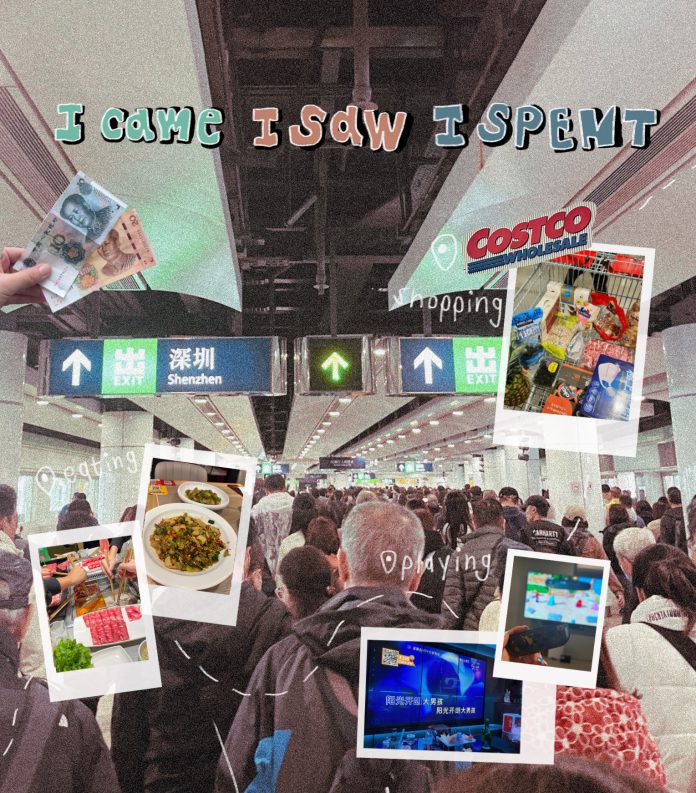Hong Kong residents are being lured to nearby Shenzhen to spend. On the last Saturday of January 2024, departures of Hong Kong residents to Shenzhen via the Lo Wu and Lok Ma Chau Spur Line crossings were over three times more than that of January 2020, according to the Immigration Department of the Hong Kong Special Administrative Region.
Stories fly around about weekend adventures there, where the food is tastier and everything is cheaper yet of the same quality. Getting ready to spend is no problem, since control points have currency exchange kiosks. Hongkongers spent HK$66.5 billion (US $8.5 billion) in Shenzhen and its neighbouring cities in 2023, according to an estimate by investment bank Natixis.
Meanwhile, the city received almost 40% less tourists in 2023 than before the pandemic, in 2019. Mainland visitors have returned, but are opting for day-long budget group tours and photo-taking instead of spending big. All this is happening despite efforts to stimulate the nighttime economy. All this spells trouble for Hong Kong’s retail sector.
Varsity talks to those going across the border to learn how big these cost differences are, and to economics professors with predictions of the future of Hong Kong’s retail scene. We also take a trip to Temple Street – a site of the city’s Night Vibes Campaign – to see what Hong Kong’s typical souvenir stores are lacking.
In our 170th issue, we dive into stories of the youth all around the world, from cadets getting involved in this year’s Taiwan election, Vietnamese students paying agencies exorbitant costs to study abroad, and children celebrating their birthdays thanks to a Hong Kong charity. In our People’s section we interview ultra marathoner Steve Lo Chun-yin, London-based performer Jarita Wan Cheuk-yin using acting to teach Cantonese to immigrants, and a mysterious artist who leaves pipe cleaner figures around university campus.
Enjoy your read!

Liam Hordijk
Chief Editor







































